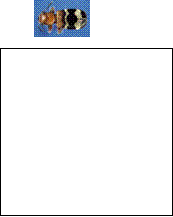
LURE EFFECTIVENESS AT ATTRACTING WOOD BORING INSECTS
IN
DIFFERENT FOREST TYPES
Janet L. Frederick and Andrew J. Storer
Michigan Technological University, School of Forest Resources
and Environmental Science, Houghton, MI 49931
DIFFERENT FOREST TYPES
Janet L. Frederick and Andrew J. Storer
Michigan Technological University, School of Forest Resources
and Environmental Science, Houghton, MI 49931


Abstract
A
new lure has recently been developed to attract long-horned beetles (Coleoptera: Cerambycidae).Several experiments were
conducted to determine the
effectiveness of this new lure compared with some commonly used lures, such as those releasing high doses of ethanol and
alpha-pinene. These experiments were conducted in two forest types to
determine the new lures attractiveness
to bark and wood-inhabiting insects in deciduous and coniferous forests.
Statistically significant results were obtained for long-horned
beetles, bark beetles,
cylindrical bark beetles and checkered beetles.
Objectives
Determine if the new long-horned beetle lure (LHB) is more effective at attracting long-horned beetles than alpha-pinene or
ethanol.
Determine if the long-horned beetle lure attracts more
long-horned beetles than alpha-pinene
and ethanol released in combination.
Determine which type of wood-inhabiting insect lure
attracts what type of wood-inhabiting
insect in deciduous and coniferous forests.

Discussion
Detection is critical
for management and possible eradication of exotic insects.
While the newly
developed long-horned beetle lure is attractive to long-horned beetles, it may cause some harmful, though
unintended, consequences as the
predatory checkered beetles and cylindrical bark beetles were attracted to this lure in large
numbers.
If a large enough
percentage of the predatory population is removed from an area it could allow their prey population (bark
beetles) to increase in number.
Further studies need
to be conducted to determine the extent to which the predatory population is being affected.
Acknowledgments
We
thank the Department of Biological Sciences and the School of Forest Resources and Environmental Science at Michigan
Technological University. We also thank the NSF REU program and its coordinators,
the graduate students
working in the lab and the REU students who helped in the work. JLF thanks Janice M. Glime for introducing her to
research.
All insect
photographs are from
For
contact: Email jfrederi@mtu.edu


Checkered Beetle- (Thanasimus dubius)
Results
Experiment 1- Deciduous Forest
Bark beetle catches
were significantly higher in ethanol baited traps than in other traps.
Checkered beetle
catches were significantly higher in long-horned beetle lure baited traps than in other traps.
Experiment 2- Coniferous Forest
Long-horned beetle,
checkered beetle, cylindrical bark beetle and bark beetle catches were significantly higher in the
long-horned beetle lure baited
traps than in other traps.
Click beetle catches
were significantly higher in alpha-pinene baited traps than in other traps.
Experiment 3- Deciduous and Coniferous Forest
Long-horned beetle
trap catches in the coniferous forest were higher in long-horned beetle lure baited traps than in the
un-baited controls. Catches of
long-horned beetles in the ethanol and alpha-pinene baited traps did not differ from catches in long-horned beetle
lure baited traps or controls
(Figure 1).
Bark beetle,
cylindrical bark beetle and checkered beetle catches were significantly higher in the long-horned beetle lure
baited traps than in other traps
in the coniferous forest (Figures 2, 3 and 4).
Trap catches of all
taxa were low in the deciduous forest.

Methods
Experiment
One and Two
Experiment one was in a deciduous forest, and
experiment two was in a coniferous
forest. These experiments were not conducted concurrently.
Each experiment had 9 blocks of 4 Lindgren multiple
funnel traps.
Traps were baited with 1) new long-horned beetle lure,
2) alpha-pinene, 3) ethanol or
4) no lure (control). Traps were emptied every 3 days for three weeks.
Experiment
Three
Conducted in deciduous and coniferous forest
concurrently.
6 blocks in each forest with three traps per
block.
Traps were baited with 1) new long-horned beetle lure,
2) alpha-pinene plus ethanol or
4) no lure (control). Traps were emptied every other day for two weeks.
All
data was square root transformed and significance of differences between treatments were determined using factorial ANOVA
(alpha=0.05). Pairwise comparisons between treatments were made using Tukeys
Honestly Significant Difference
test.
Collection cup: includes beetles from the families Cerambycidae (long-horned beetles), Scolytidae (bark beetles), Cleridae (checkered beetles), and Colydiidae (cylindrical bark beetles).





Figure 1: Mean number of long-horned beetles trapped in deciduous
and coniferous forest. Back
transformed data shown following ANOVA. Bars with different letters differ, P<0.05. Error bars are of standard error.
Figure 2: Mean number of bark beetles trapped in deciduous and coniferous
forest. Back transformed data shown following
ANOVA. Bars with different letters differ, P<0.05. Error bars are of standard error.
Figure 3: Mean number of checkered
beetles trapped in deciduous and coniferous
forest. Back transformed data shown following
ANOVA. Bars with different letters differ, P<0.05. Error bars are
of standard error.
Figure 4: Mean number of cylindrical
bark beetles trapped in deciduous and coniferous
forest. Back transformed data shown following
ANOVA. Bars with different letters differ, P<0.05. Error bars are of standard error.

Bark Beetle- (Ips grandicollis)
